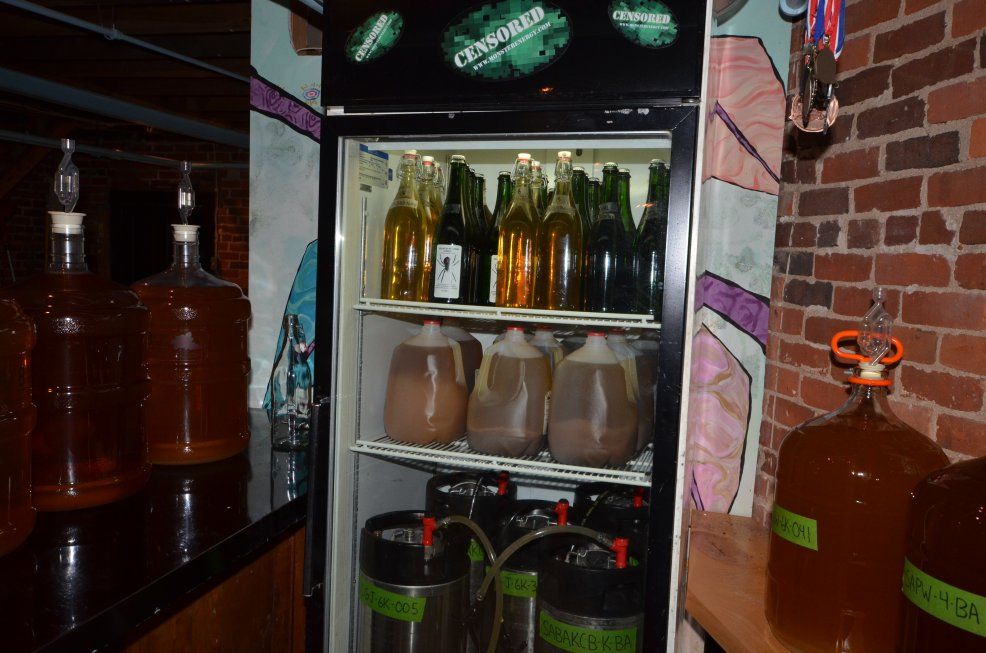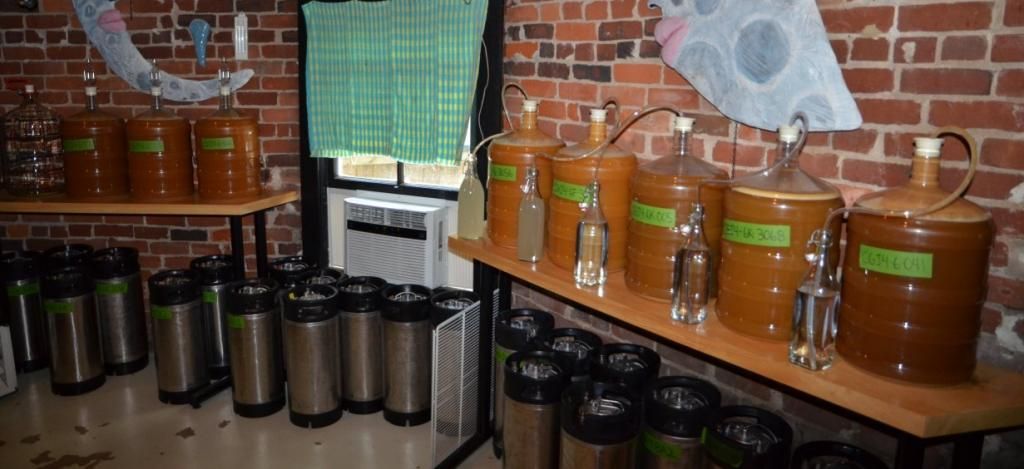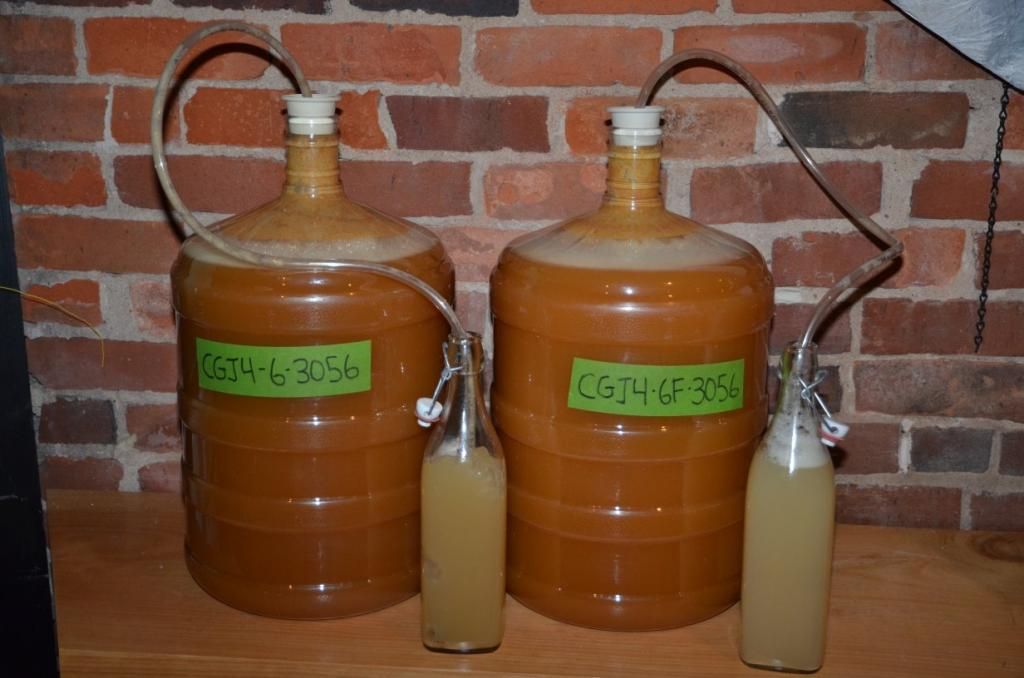CvilleKevin
Well-Known Member

Last Sunday, I had some friends over to check out some ciders from this year and previous years. We made it through 20 bottles, plus a few growlers from what's currently on tap. 24 folks stayed coherent enough to both fill out rating sheets and remember to leave them here, which I believe is a record!
Looking at ratings and comments, it appears that the tastes break down into (roughly) three groups. The first group (which is the smallest) likes the dry ciders the best and will tolerate sweetness up to about 1.008, as long as there is a lot of apple flavor going on. The next largest group (which is where I fall in) likes the semi-sweet ciders better, as long as the finish isnt too acidic. The largest group prefers a sweeter cider with a tangy finish.
The highest scoring cider of the evening was the last one - Number 20. It got an average score of 8.6. Part of this score was no doubt due to the "drank 19 bottles of cider previously" effect, but also the apple flavor was really intense on this one. I thought it was a little too sharp in the finish and so did a couple of other folks - but the majority of folks liked the tartness.
The next highest score was number 10. It got an average score of 7.9 (which being in the middle of the evening was probably a more sober evaluation). It didnt get any rave reviews, but seemed to hit the spot for most everyone and didnt turn anyone off.
Number 16 was a close third behind #10. This was from a keg from last season that had got a little sharp. Last August, when I tapped the keg, I added 14oz of maple syrup to the keg. Being an alkaline sweetener, the maple really takes the edge off a sharp finish without adding too much sweetness. It was 1.010 when I originally crashed it, probably more like 1.012 now, after the extra sugar bump.
The Danstar BRY97 West Coast Ale yeast (new yeast that I tried this season) held up well. The unsulfited version scored the best, with an average score of 7.7, putting it in the top third. Given that this yeast was pretty easy to work with, I'll be doing some keg batches with it next season. Folks did not like the sulfited version as much, with an average score of only 6.3. for identical juice and yeast.
As usual, the dry ciders did not have very high average scores, although a few peopled liked them. The best overall score was the one that I stopped at 1.004 - which was dry enough for people who like them really dry, but did not completely turn off those who like a sweeter cider. Of the ones that I purposely fermented completely dry this season (D47, 71B, Premier Curvee and Cotes de Blanc), the folks who liked dry ciders gave the Lalvin D47 the best ratings, even though the average score was only 5.6 and some others scored higher on average. I also had one from over 5 years ago - Jonathan apples, pressed 9/18/08 with S04 ale yeast fermented to 0.996. That one scored an average of 6.4, which is not great, but not bad for a crowd that is generally pretty tough on a dry cider. Over the years, its developed a floral sort of taste, which is interesting.
Full results - with average scores in []:
Dry ciders - Spitzenburg, Arkansas Black, Ashmead's Kernal, Calville Blanc - pressed 11/23/13
1 Lalvin D47 yeast fermented dry [5.6]
2 Lalvin 71B yeast fermented dry [4.3]
3 Red Star Premier Curvee yeast fermented dry [6.5]
4 Red Star Cotes de Blanc yeast fermented dry [6.5]
5 Fermentis S04 yeast - stopped at 1.000 [6.0]
6 Brupaks Ale yeast stopped at 1.004 [7.1]
7 Jonathan Apples, pressed 9/18/08, SO4 Ale yeast, very dry (0.996) [6.4]
Cortland, Gala Jonathan - pressed 9/19/13
8 Weihenstephan Wheat yeast, Sweet (1.018) [7.4]
9 WLP005 British Ale yeast, semi sweet (1.012) [7.3]
10 WPL041 Pacific Ale yeast , semi sweet (1.010) [7.9]
Stayman, Albemarle Pippen, Winesap - pressed 2/12/14
11 Danstar BRY97 west coast ale yeast yeast, semi sweet (1.012) [7.7]
12 Danstar BRY97 west coast ale yeast yeast, killed wild yeast before pitching, semi sweet (1.012) [6.3]
13 Stayman, Gala, Winesap apples, pressed 10/24/13, US05 Ale yeast, semi sweet, (1.008 ) [7.7]
14 Cville Cider pressing party (mostly Winesap), pressed 11/2/14, Brupaks Ale Yeast [7.8]
15 Stayman, Pink Lady, Gold Rush, Winesap, pressed 12/23/13, Nottingham Ale Yeast, semi sweet (0.010) [7.5]
Cortland, Grimes Golden, Empire, Gala, Summer Rambo, Jonathan - pressed 9/13/12
16 Brupaks Ale yeast, maple sugar, semi sweet (1.010) [7.9]
17 Brupaks Ale yeast, semi sweet (1.010) [7.3]
18 Weihenstephan Wheat yeast , semi sweet (1.010) [6.5]
19 German Wheat yeast, Orange Blossom honey, semi sweet (1.012) [7.3]
Stayman, Empire and Winesap - pressed 10/15/12
20 Bavarian Wheat yeast, semi sweet (1.008) [8.6]





